Google is a crowded place. Making a mark for your website on this platform could be a tough nut to crack. If you’re truly ambitious about your brand’s online presence, you can not just leave its fate to the Gods of Google’s algorithm.
You must harness the power of Search Engine Optimization (SEO), your key to showing up at the top of Search Engine Results Pages (SERPs).
A fantastic SEO strategy is the one that optimizes your content in a way that aligns with how search engines (Google, Yahoo, Bing, etc.) analyze and rank. This means that when your potential customers are on the internet, your page is the first one they see.
Your position on Google matters a lot. Just take a look at these CTR stats:
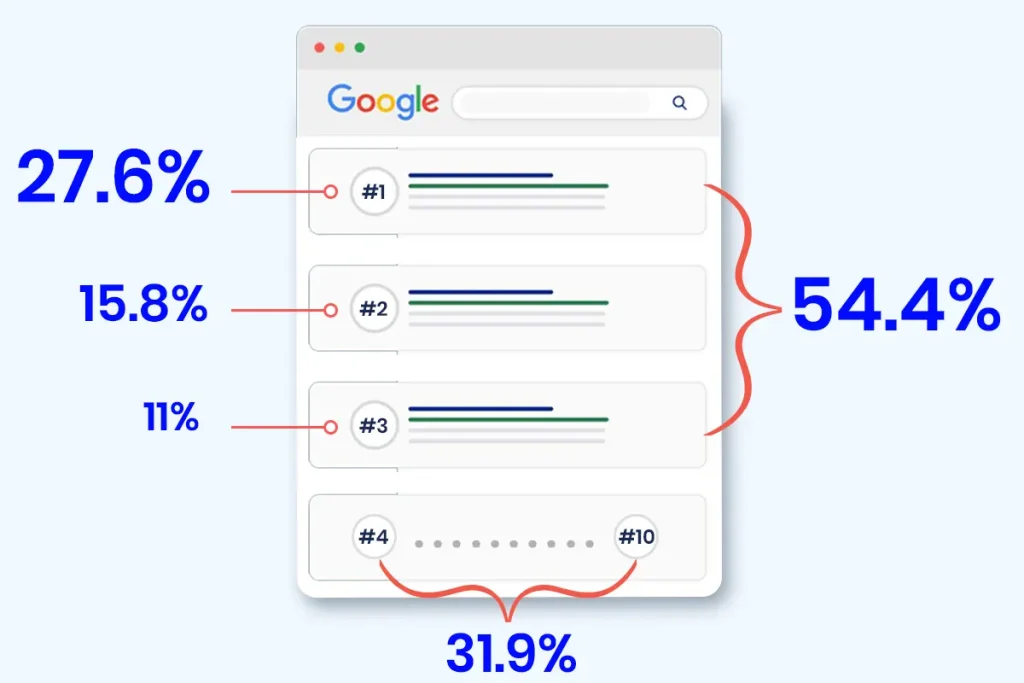
- Approximately 90% of users click on results from the first page of Google.
- Only 5-10% of users go to the 2nd page and beyond.
The emergence of AI and the perpetually changing Google algorithm can put you in a tricky spot. So your SEO strategy, too, has to evolve with these gradual but fundamental shifts in the digital landscape.
That’s why keeping up with the latest SEO updates, like the Google core updates of March 2025, is more important than ever.
We adopted and tested out these 10 tips as a part of our SEO Strategy for 2025, and it’s safe to say they’ve been coming through with flying colours. We’re happy to share a page from our notebook so you too can make the most of these best SEO practices.
Simple SEO Tips That Actually Work In 2025
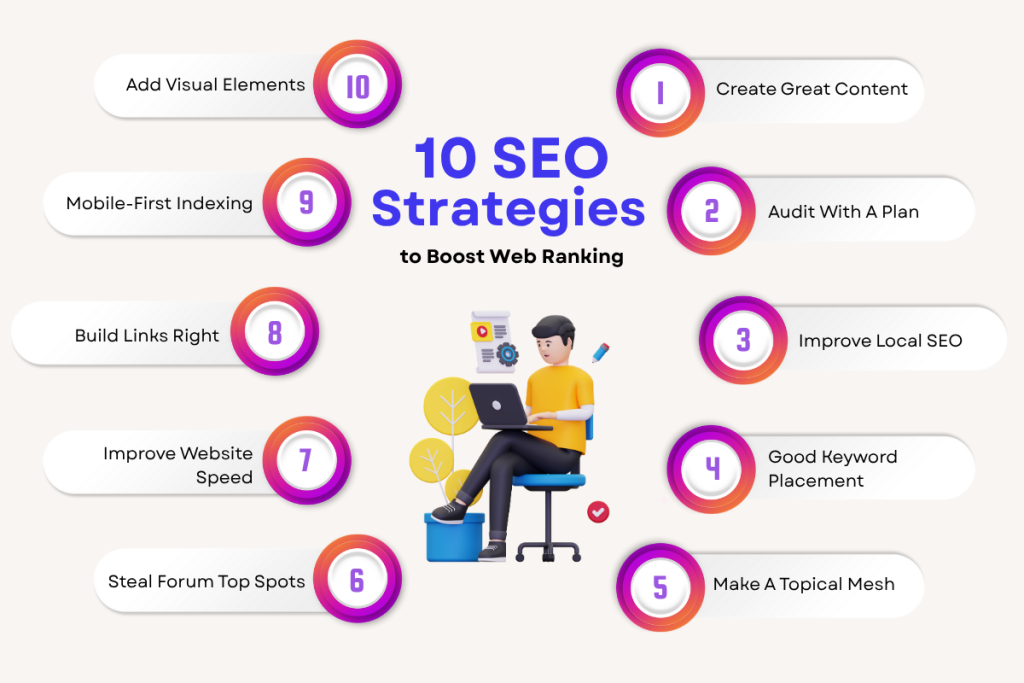
1. No SEO Hacks, Just Great Content
Let’s be honest. There is no substitute for quality content. The most effective SEO Strategy is to forget about search rankings altogether while writing content. (ironic, but true!)
Google prefers content that is unique, well-researched, and offers useful insights to the readers. Even in 2025, Google has affirmed that content is still king. It’s the number one reason your page makes it to the top (or doesn’t!).
The latest addition is Google’s featured snippets, which is the new position zero. Its purpose is to quickly answer the user’s query directly on the search page.
Google’s AI overview sources this information from one or more websites that accurately and succinctly answer the question.
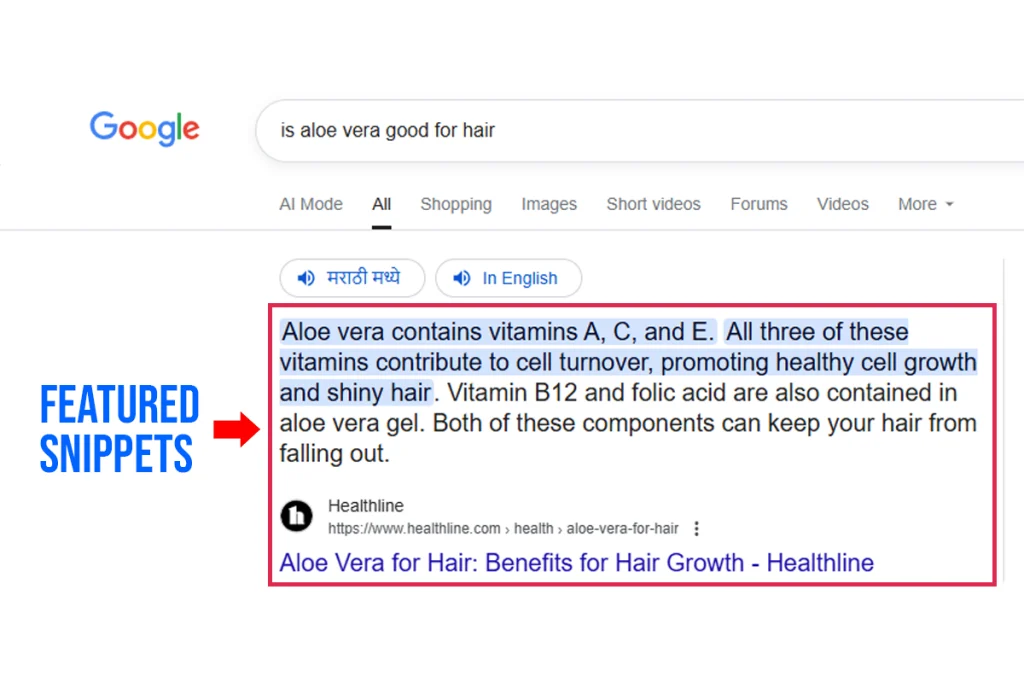
Writing comprehensive and easy-to-understand text can get your content to feature in the upper echelon of Google’s Page 1.
So what should you do?
Write fantastic content. Simple!
Have a good understanding of your target audience and their intent. Write solely with the intention to resolve the reader’s query and to add value to their life.
2. Audit, But Don’t Be Reckless About It
Got the habit of regularly optimizing old content? Good job! But you’re doing it for the heck of it, without a proper strategy? You’re pushing it.
Consistently optimizing your old content is a healthy practice. It keeps your website fresh and information updated.
However, a sloppy auditing job can do more harm than good. It can mess up your current rankings and change content that was actually working.
So what should you do?
Don’t rush into auditing blindly. Go in with data and a plan. Use tools like Google Analytics, Google Search Console, and SEMrush to identify areas where your content lags from a user’s perspective. Check out what’s trending and update your blog with fresh, useful info.
3. Level Up Your Local SEO Strategy
Do you have a business or a practice located in just one place? If so, targeting a national or international audience might be a waste of time.
Start by targeting locally. You’ll notice the keywords are less competitive that way. So you have a chance to make a mark in a less crowded space.
And in the future, when you’re ready to scale higher, go the Avalanche SEO way.
The Avalanche SEO strategy is the one in which you start small, targeting only low-competition, low-search-volume keywords. But as you build authority and ranking, you can move to the high-volume, high-difficulty keywords.
Here’s our attempt at cracking local SEO, using hyper-localised primary and secondary keywords.
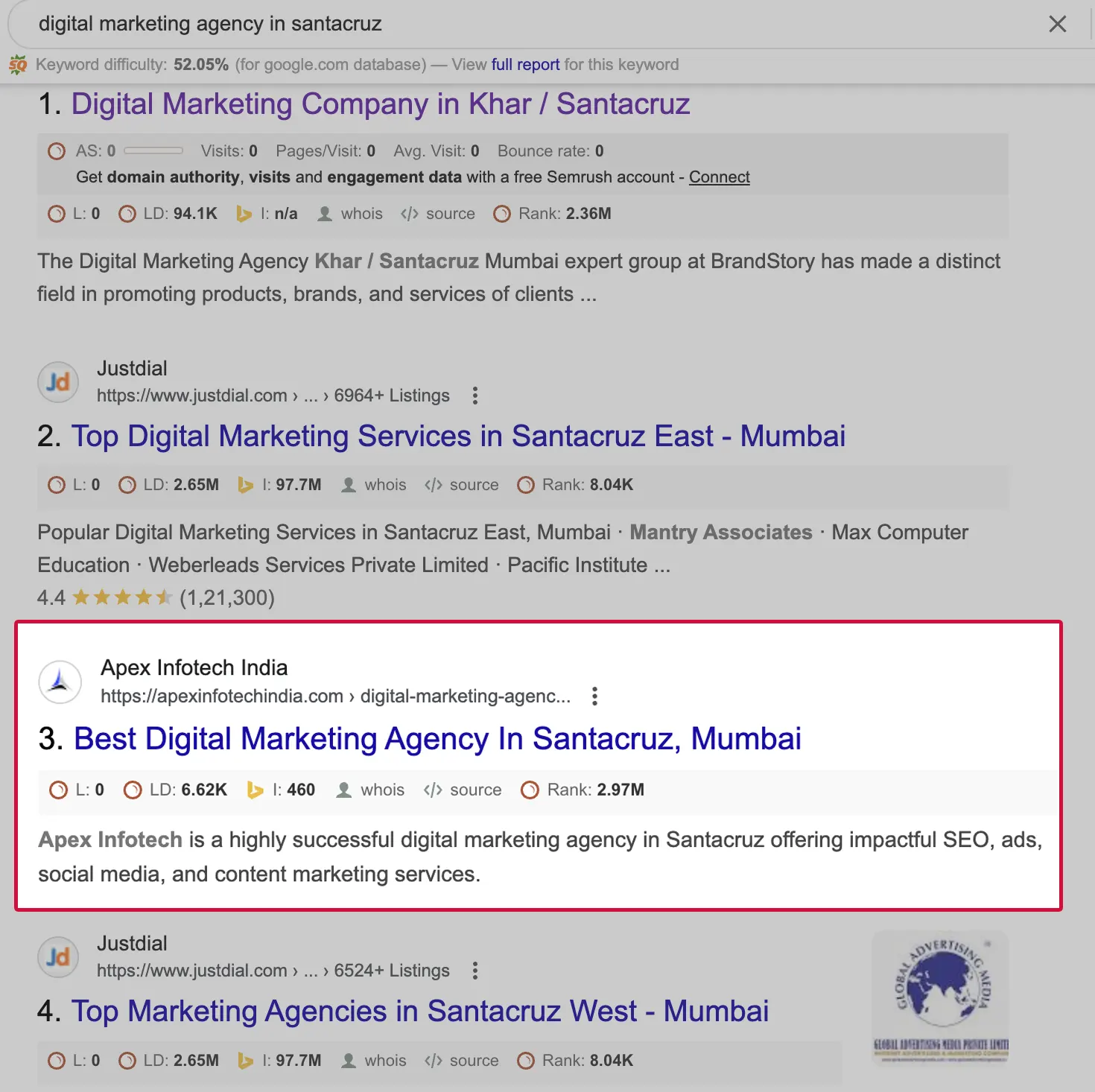
So what should you do?
You add more local keywords in your content, but don’t stop there. Also, keep your Google My Business up-to-date and fully optimized. That’s a big part of showing up in local searches!
4. Smart Keyword Placements
As a general rule, include your primary keyword in the H1, H2 Headers, URL, meta title, and description.
But apart from that, your primary keyword should be strategically laced throughout your page.
Let’s look at an example:
This is one of our client’s high-performing blog posts. Notice how we front-load the primary keyword not only in the H1 heading but also use it within the opening paragraph of the blog—a simple move that seems to be working well for it.
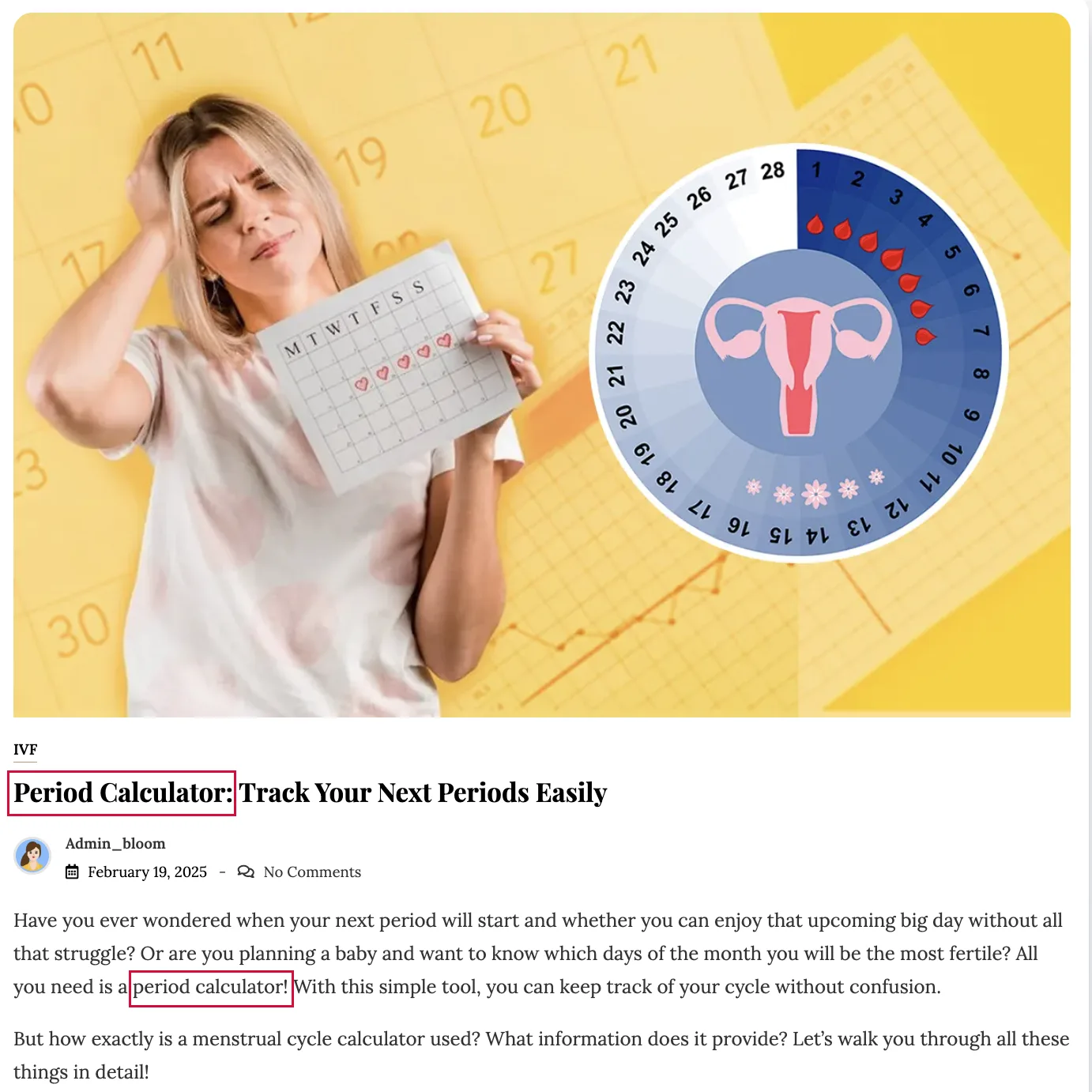
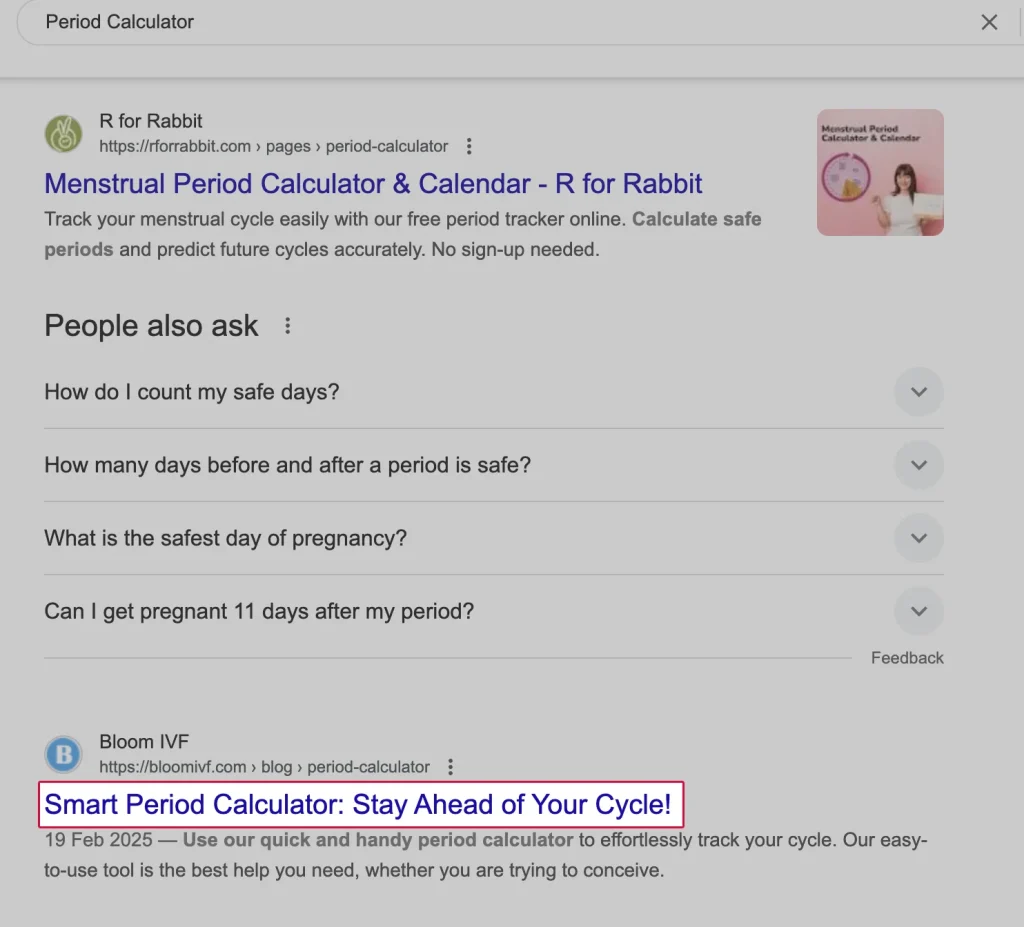
So what should you do?
One of the most essential SEO tips is to use your primary keyword within the first hundred words of your content. Similarly, try to start your meta titles with the primary keyword. Earlier placement helps Google recognize and prioritize your content.
5. Create A Topical Mesh
Creating topical clusters is more relevant now than ever. The idea is simple- write blogs around main subtopics that come under one umbrella.
This helps you in two ways.
- Search engines understand your expertise.
- Visitors stay on your site longer, as they find all the information regarding their topic of interest in one place.
Say, for example, you’re a nutritionist, building a website for your services. You can apply the topical mesh strategy like this:
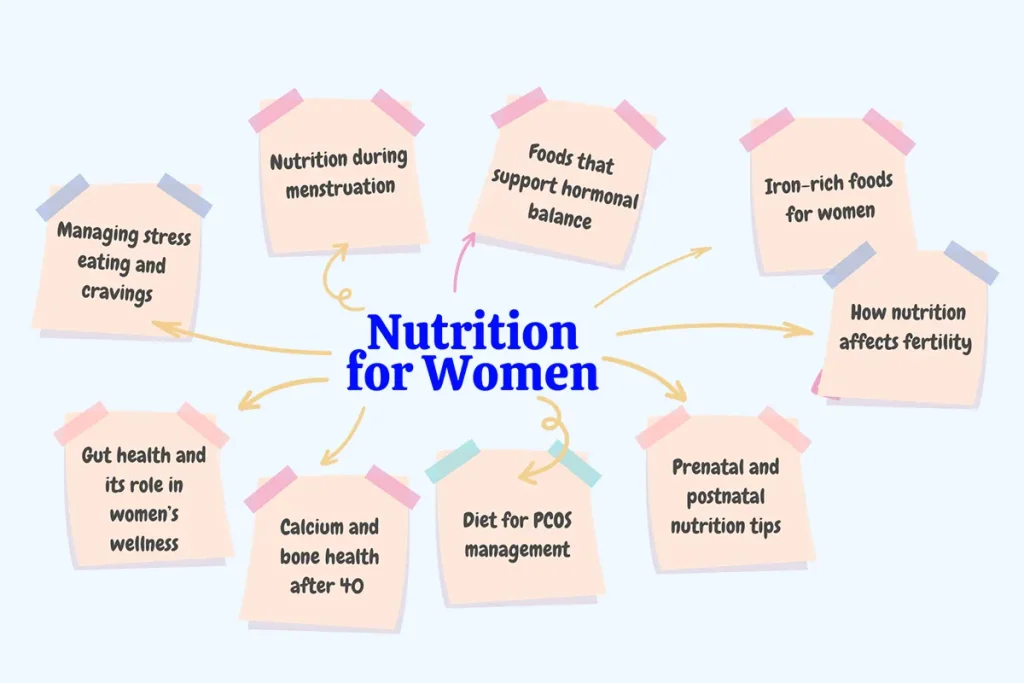
So what should you do?
Brainstorm topics or use tools like AnswerThePublic or Google’s “People Also Ask” section to get an idea of what your audience is searching for. Then build content around those questions. Give an internal link to 3-5 related blogs within each blog, wherever it makes sense.
6. Steal Top Spots from Reddit & Quora
If you Google something and the top results are of Reddit or Quora, or any discussion forum, that’s your cue to write a blog on it (if it’s relevant to your niche, of course!)
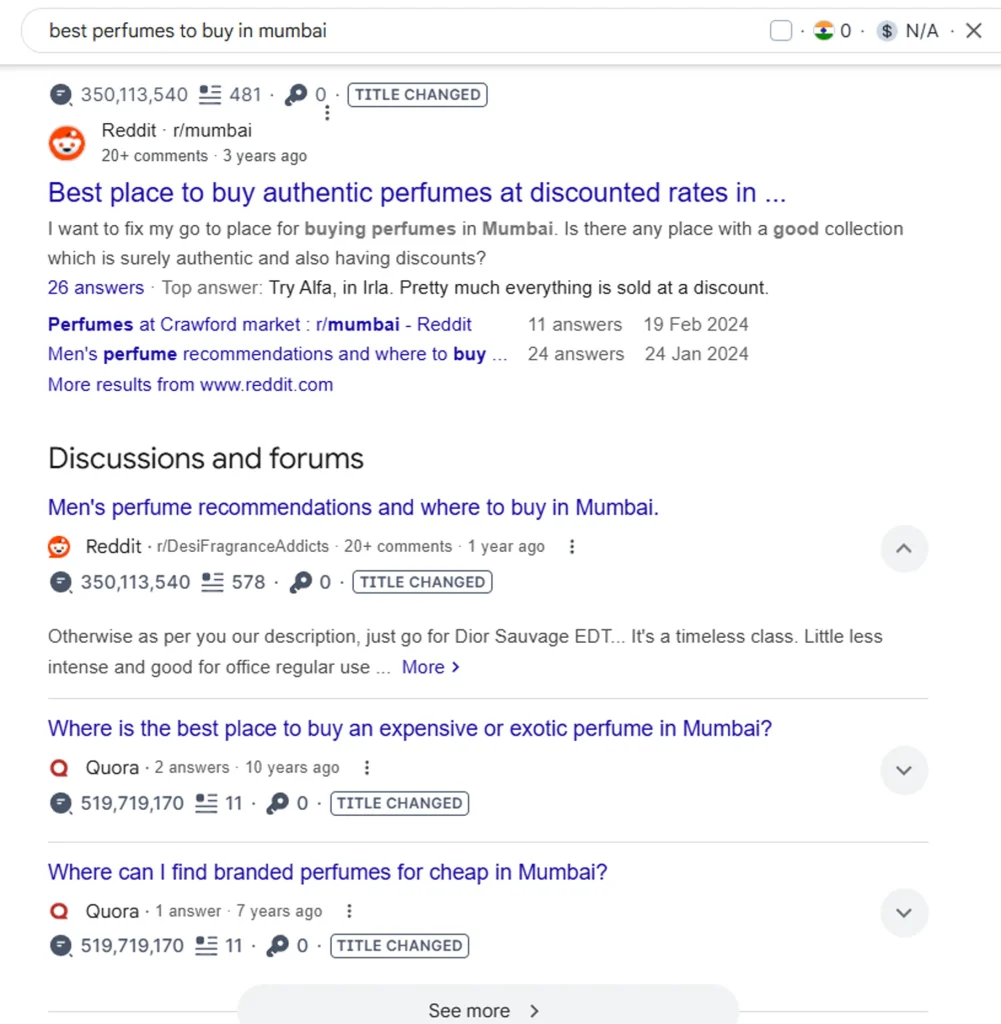
When Google ranks these forums on top, it usually means two things.
- It is a niche question with a very specific intent.
- There is no good blog answering it well yet.
So what should you do?
Find these gaps and draft a well-researched, comprehensive blog post on them. It might be very easy for you to outrank Quora or Reddit with high-quality content.
7. Improve Website Speed
Everyone knows this—no one on the internet has an attention span of more than 3 seconds. So if your site doesn’t load in 3 seconds or less, you’re a skip!
Your website speed is simply how quickly your site loads—and it’s a big deal! It is one of the most defining parameters for your Google ranking.
Google doesn’t want users to get frustrated waiting for the site to load. That’s why fast-loading sites are preferred.
So what should you do?
Select a good hosting provider, compress your images, and use modern formats like WebP to speed things up. Also, avoid heavy plugins and keep your design clean for quicker loading.
8. Build Links The Right Way
If you want to stay ahead in SEO trends 2025, do this one thing — build a strong link profile! The more quality links you earn from trusted websites, the more Google sees you as a real and trustworthy.
But bear in mind: it’s not about getting a hundred random links. A few solid backlinks from high-authority sites do the trick. Quality always overpowers quantity; that’s what makes it a legit SEO strategy.
So what should you do?
One of the best Google ranking tips is to get backlinks from websites that are trusted in your niche. Think guest blogging, partnerships, or collabs. Mix it up a bit and get links from blogs, news sites, and even directories.
9. Optimize for Mobile-First Indexing
Sure, most of your back-end work happens on a desktop, but your users aren’t all there. 63% of website traffic comes from mobile devices.
Here’s the kicker: Google predominantly uses the mobile version of your site for indexing and ranking. So if your mobile site isn’t up to the mark, your visibility on search engines will suffer.
It’s backed by Google itself :
So what should you do?
Create a website that seamlessly adapts to various screen sizes. Compress images, clean up your code, and use browser caching to speed up mobile loading. Smooth, fast, and mobile-friendly – that’s what Google (and users) love.
10. Make Your Page More Visual
If anything can be conveyed in the form of imagery, go for it. A good image can do what 100 words can’t.
Charts, infographics, and step-by-step visuals — all of these make your page more appealing and engaging. As for images, make sure they are relevant and of good quality.
So what should you do?
Use as many helpful and clear snippets as possible. And don’t forget Alt text. It is the way through which Google ‘reads’ your image. So, add keyword-rich alt descriptions to all your images.
2025 Calls For A Solid SEO Strategy, Not Shortcuts
Gone are the days of keyword stuffing and shady backlinking. With the latest SEO updates, search engines have become smarter, more user-centric, and focused on originality. The best-performing SEO strategies of 2025 will focus on exactly that.
Apex Infotech, the top SEO company in Mumbai, specializes in all types of SEO and also in adapting to all of Google’s shenanigans! Our main focus is to create long-lasting credibility and relevance for your business.
We are aware that the rules are ever-changing. But with a content-friendly, future-ready SEO strategy, your results can too.
Frequently Asked Questions
What is the best SEO strategy?
A successful SEO strategy comprises effective planning and execution of keyword research, competition study, quality backlinks creation, schema markup, and structured data.
How to build backlinks?
To create backlinks, you need to:
– Write content that other websites will want to link to
– Find broken links on other sites and offer replacement content
– Ask websites that mention your brand to add a clickable link to it
– Write guest blog posts
What does CTR stand for in SEO?
CTR (Click Through Rate) tells you the percentage of the ratio of the number of users clicking on your search result to the number of impressions it receives. A higher CTR is evidence that your content is capturing users’ attention.
How many SEOs are there?
On Page, Off Page, Technical, Local, and E-commerce are the main sub-categories of SEO. While each of these types is important, they work best with the support of one another.
What does SERP stand for?
Search Engine Result Pages (SERP) appear when a user types in their query. It displays a mix of organic results, sponsored posts, featured snippets, videos, etc.


